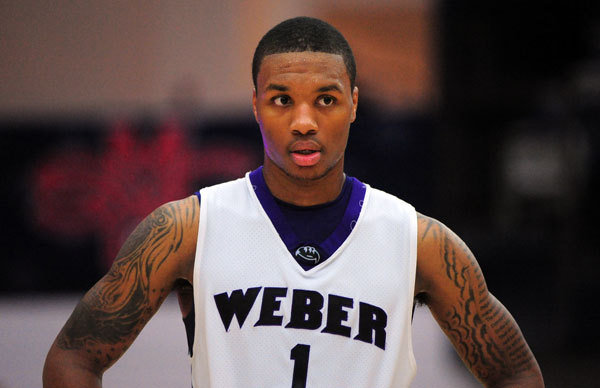Handicapping Lillard’s NBA Chances: How Have Prospects From Mid-Majors Fared in the Pros?
Posted by EJacoby on June 28th, 2012Looking at the upcoming NBA Draft’s projected lottery picks, most of the players represent the big boys around the nation – Duke, North Carolina, Kentucky, Kansas, Florida, Connecticut. But smack in the middle between guys that played in a Final Four is a kid from Weber State. Anybody who follows college hoops or draft scouting surely knows about Damian Lillard, but it’s still surprising to see a player ranked so highly who most fans have never seen play a minute of college basketball. Will Lillard, who is projected to go in the top 10 as the draft’s top point guard, struggle to adapt to the massive increase in competition from the Big Sky Conference to the NBA? We researched lottery picks over the past 15 years from mid-major conferences to judge how successful they were in their transition to the league, grading success based on extended NBA productivity in the form of minutes played and value added. We considered all conferences outside of the top six power leagues as ‘mid-majors,’ so even the Atlantic 10, Conference USA and Mountain West qualify for our criteria.

Will Damian Lillard struggle in his transition from the Big Sky to the NBA? (US Presswire/K. Terada)
Taking a look at recent history, names like Jimmer Fredette and Stephen Curry came from smaller schools yet were still some of the most popular collegiate players in the nation. Just because a player hails from a mid-major school doesn’t necessarily mean he was an unheralded prospect. Nonetheless, the point of our analysis is to determine what, if any, crutch comes along with stepping up from such a wide gap in competition for lottery picks. Even though Fredette was a National Player of the Year winner, he still faced relatively weaker competition on a nightly basis at BYU. Is it more difficult to scout and project success for a mid-major prospect? Let’s take a look at how these players have fared historically. You’ll notice a trend that suggests Lillard should have a great chance at NBA success.









































